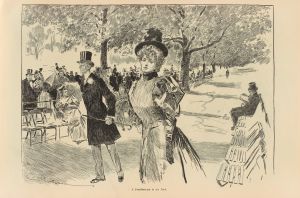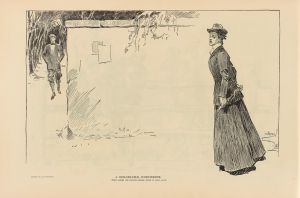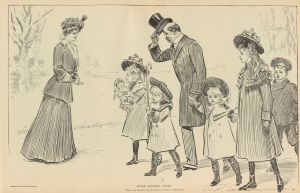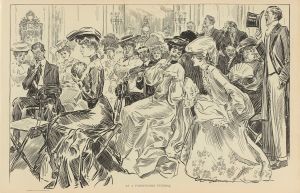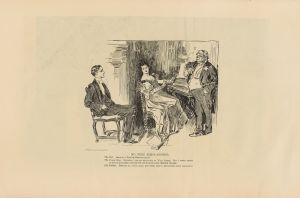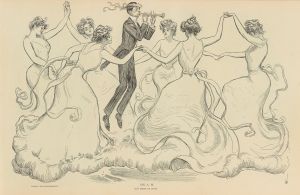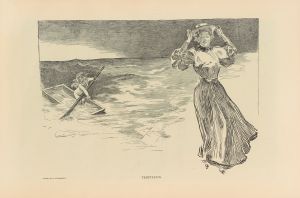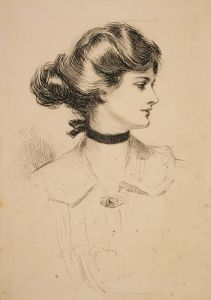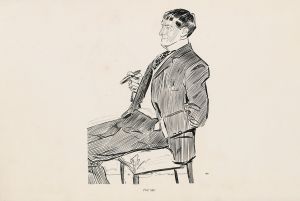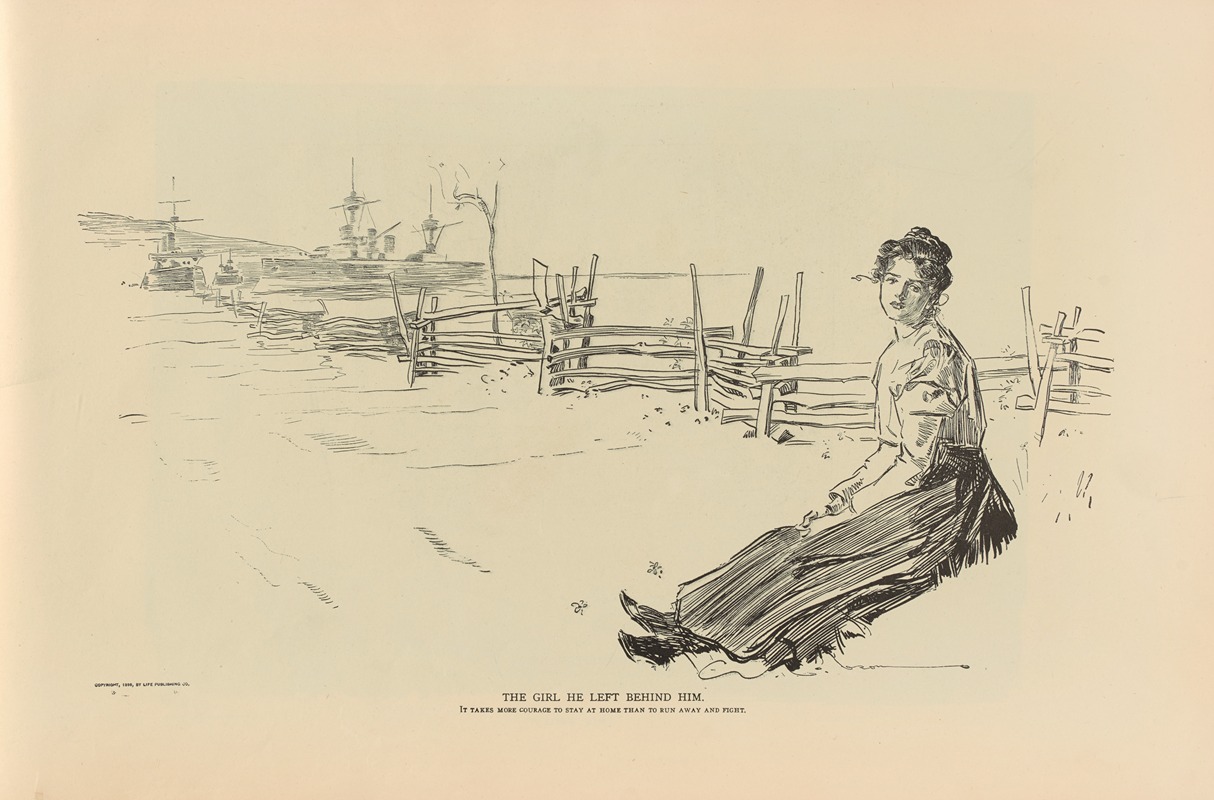
The girl he left behind him
A hand-painted replica of Charles Dana Gibson’s masterpiece The girl he left behind him, meticulously crafted by professional artists to capture the true essence of the original. Each piece is created with museum-quality canvas and rare mineral pigments, carefully painted by experienced artists with delicate brushstrokes and rich, layered colors to perfectly recreate the texture of the original artwork. Unlike machine-printed reproductions, this hand-painted version brings the painting to life, infused with the artist’s emotions and skill in every stroke. Whether for personal collection or home decoration, it instantly elevates the artistic atmosphere of any space.
"The Girl He Left Behind Him" is an iconic illustration by Charles Dana Gibson, an influential American graphic artist best known for his creation of the "Gibson Girl," a representation of the idealized American woman at the turn of the 20th century. This particular work is part of a series of illustrations that capture the essence of the Gibson Girl, who became a cultural icon during the late 19th and early 20th centuries.
Charles Dana Gibson was born on September 14, 1867, in Roxbury, Massachusetts. He studied at the Art Students League in New York City, where he honed his skills in drawing and illustration. Gibson's work gained widespread popularity through publications such as "Life," "Harper's Weekly," and "Collier's Weekly," where his illustrations were regularly featured. The Gibson Girl, characterized by her poise, beauty, and independence, became a symbol of the modern American woman.
"The Girl He Left Behind Him" is one of Gibson's notable works, capturing the emotional depth and societal themes of the era. The illustration depicts a young woman, elegantly dressed, sitting alone with a contemplative expression. The title suggests a narrative of separation, possibly due to a man going off to war or leaving for other obligations, a common theme during the time when men were often called away for military service or work-related travel.
Gibson's illustration style is marked by its detailed line work and the ability to convey complex emotions through simple yet expressive compositions. The Gibson Girl, as seen in this work, is portrayed with a sense of grace and dignity, embodying the changing roles and perceptions of women in society. She is both a figure of beauty and a representation of the evolving independence and strength of women during the late 19th and early 20th centuries.
The impact of the Gibson Girl was significant, influencing fashion, culture, and the perception of women in society. She was seen as a progressive figure, challenging traditional gender roles and inspiring women to pursue greater autonomy and self-expression. The Gibson Girl's popularity extended beyond illustrations, influencing fashion trends with her characteristic hairstyle and attire, which became widely emulated by women of the time.
Charles Dana Gibson's work, including "The Girl He Left Behind Him," remains an important part of American art history, reflecting the cultural and social dynamics of the era. His illustrations continue to be studied for their artistic merit and their role in shaping the image of women in the early 20th century. Gibson's legacy lives on through his contributions to the art world and his lasting impact on American culture.





